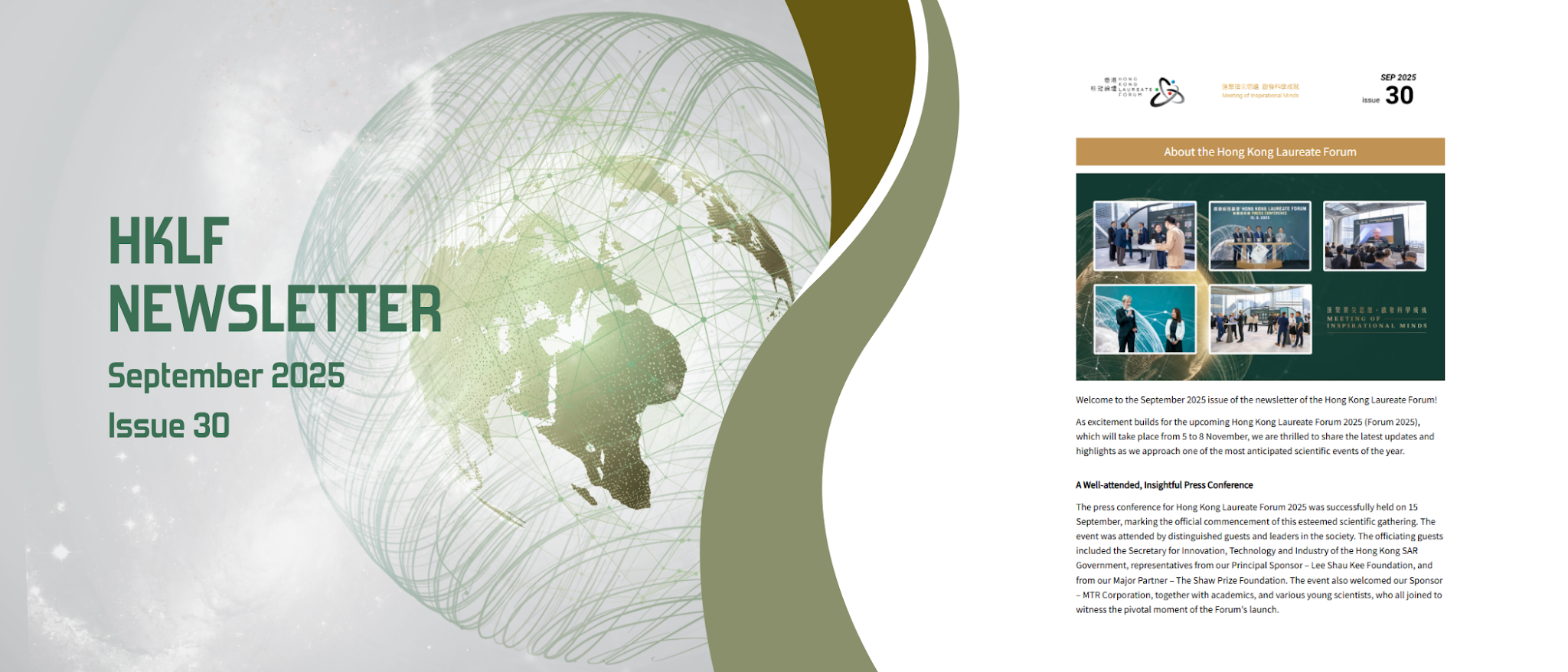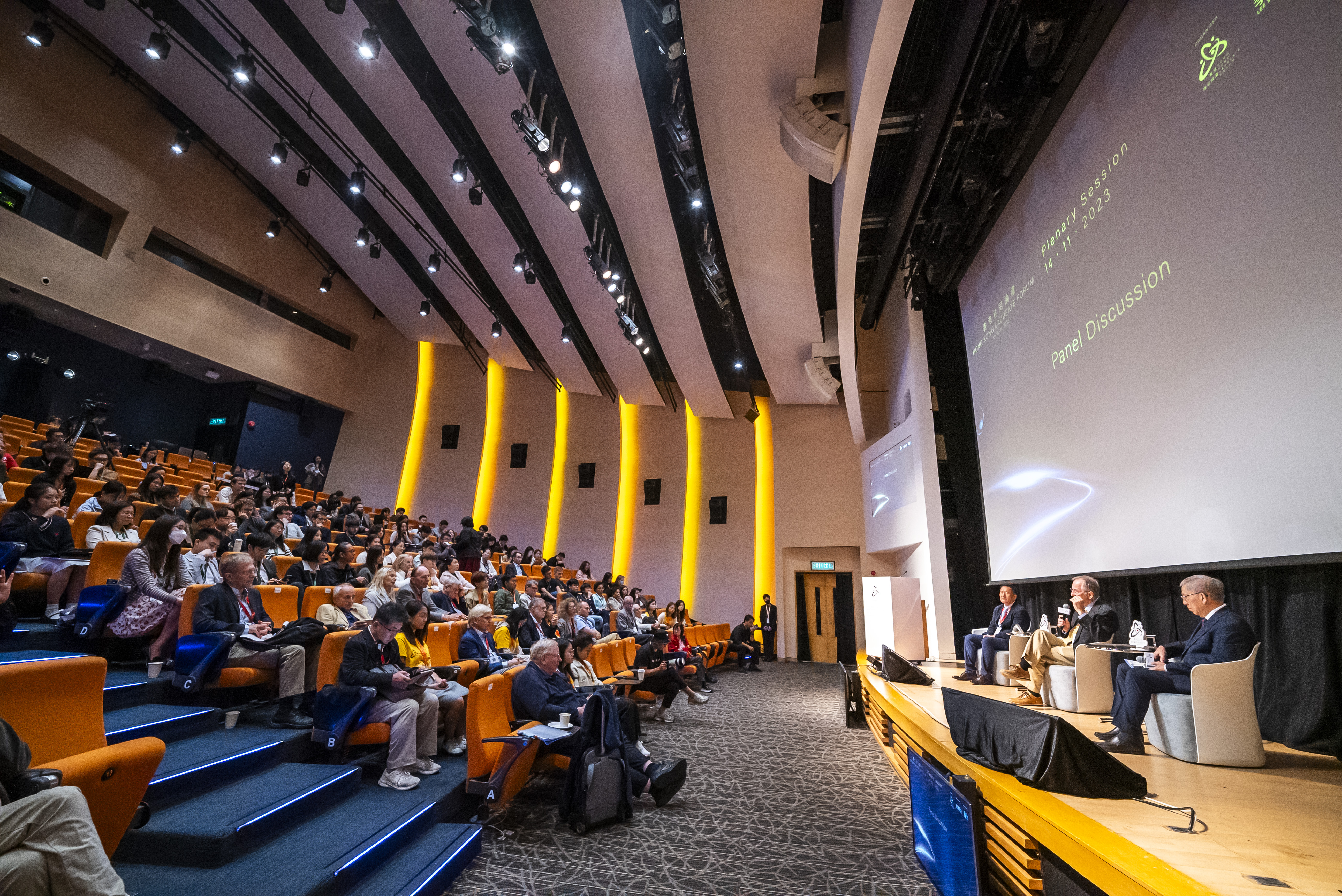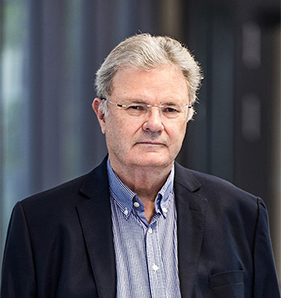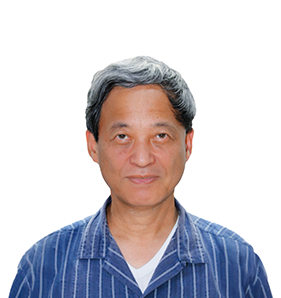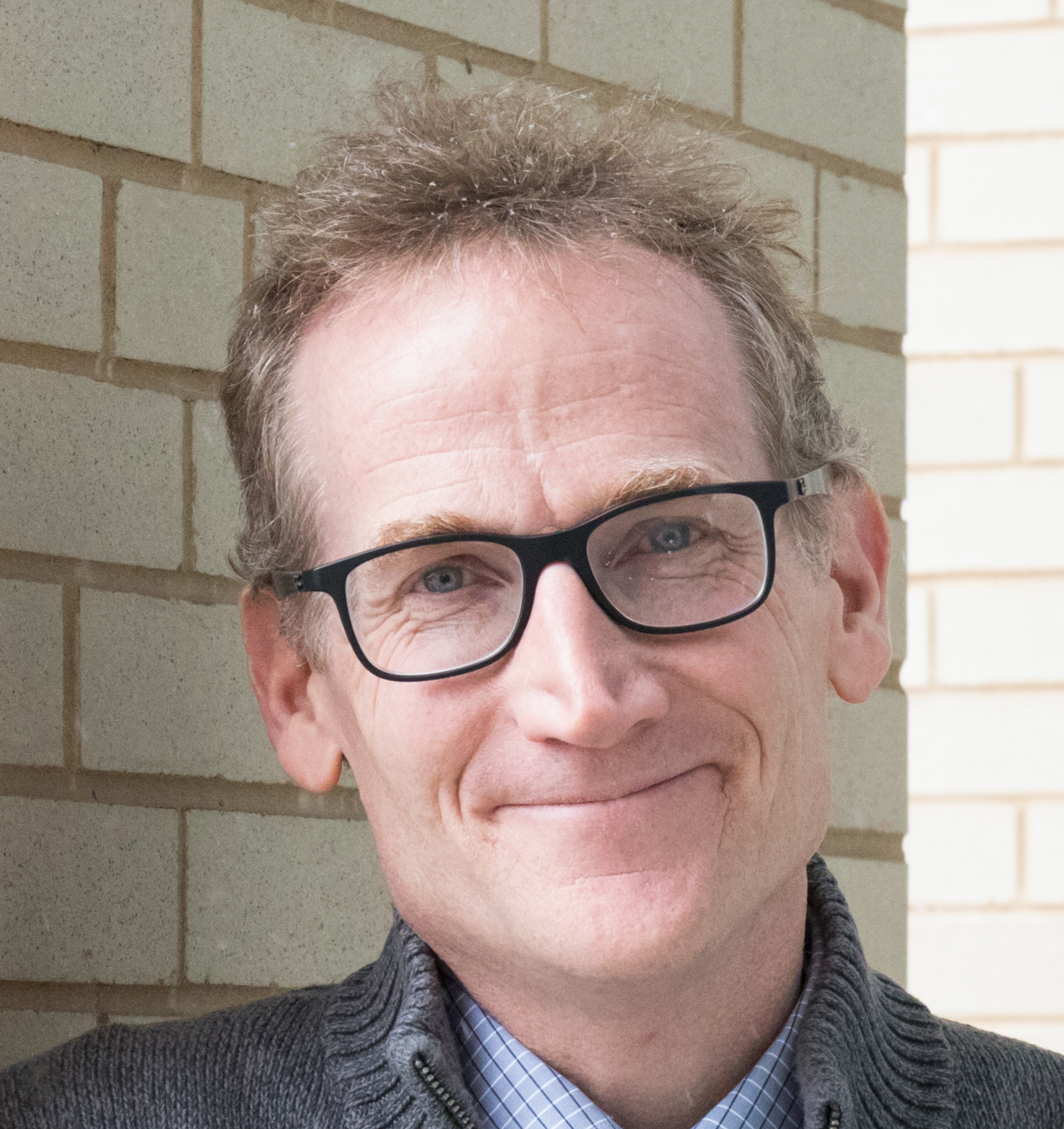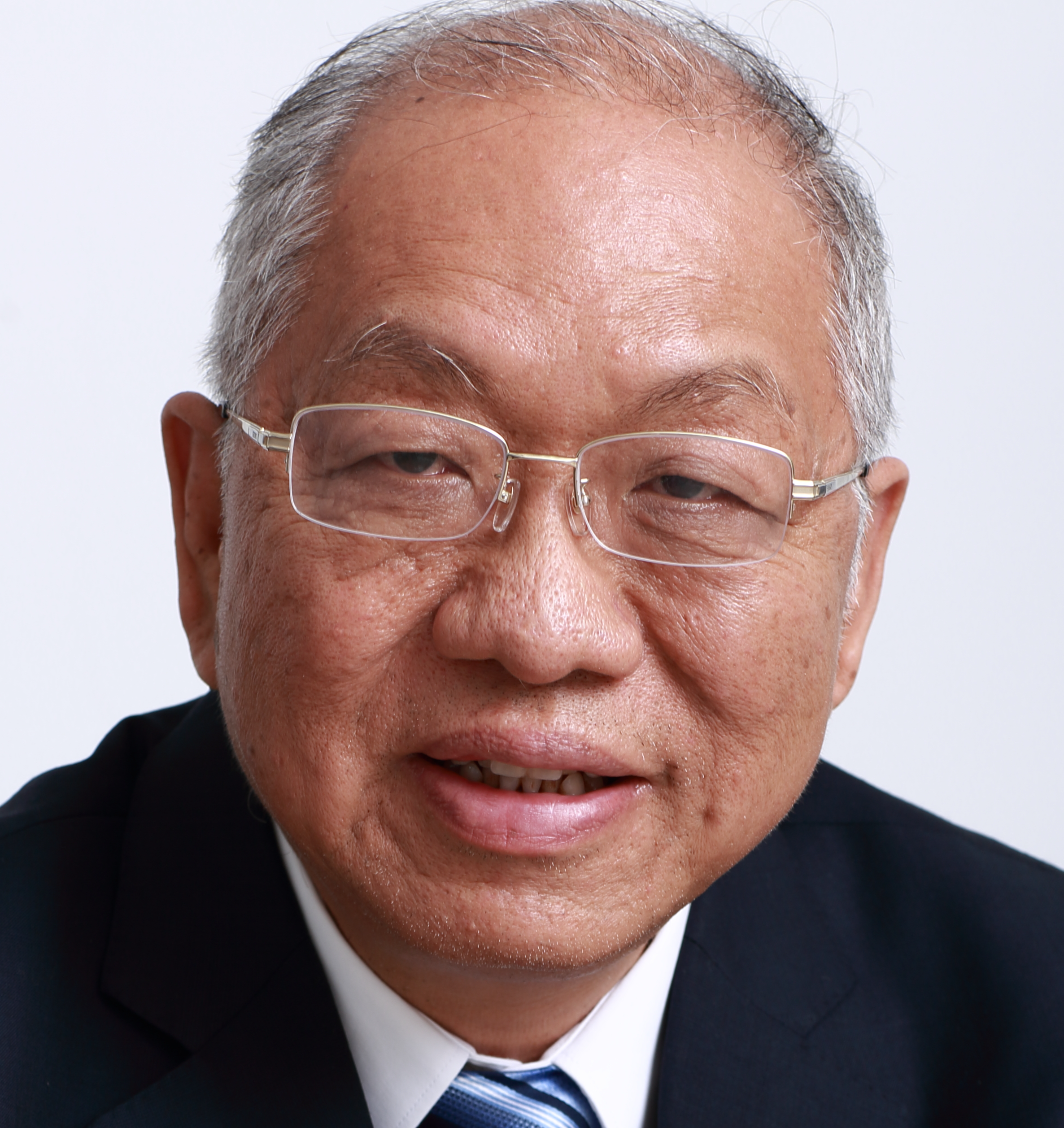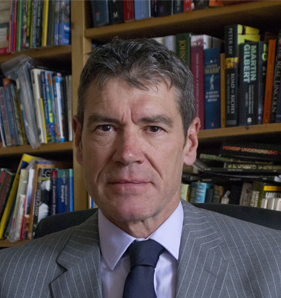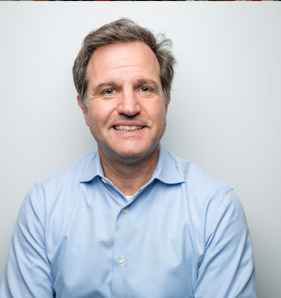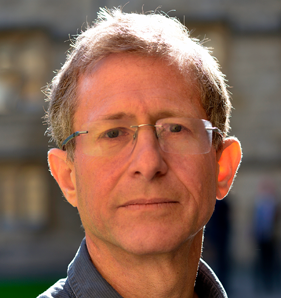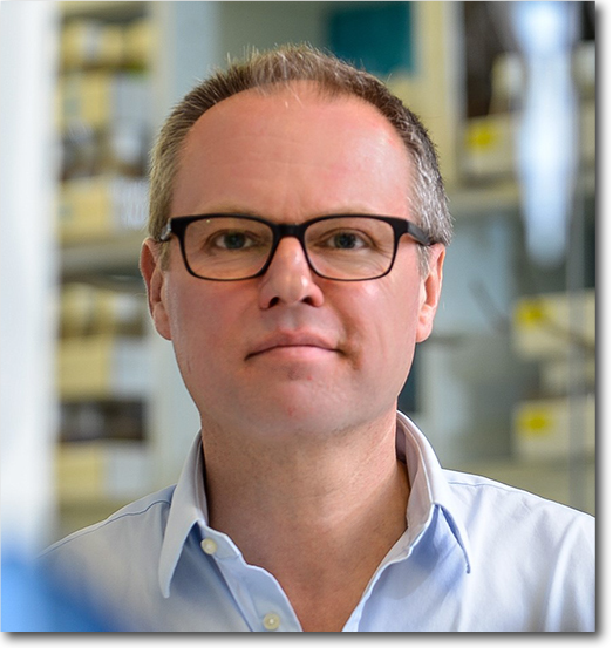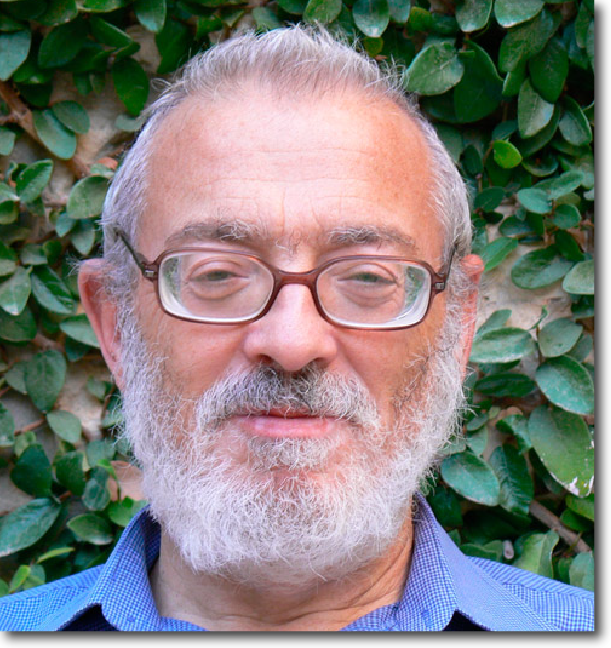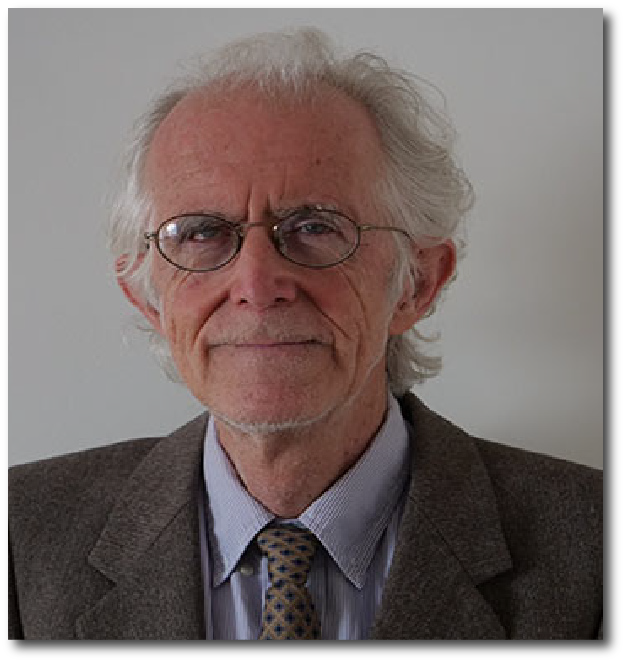Health is important and essential to every living organism. To human, it is a state of complete physical, mental and social well-being and not merely the absence of disease or infirmity1. The World Health Organisation (WHO) considers health as a resource for everyday life, not merely the objective of living. Health is thus a positive concept involving social and personal resources to support the daily functions in the wider society everyone lives in, as well as the physical capacities. A healthful lifestyle is entirely desirable and provides the means to lead a full life. Everyone should be aware of the potential risks of falling sick, thus deviating from the healthy state. However, in times of infirmities, arising from ageing and exhaustion, or during major mass threats of unpredictable outcomes, such as the current coronavirus disease (COVID-19) pandemic2, health becomes the ability of a body to adapt to the demanding situation and recovery. What can the authority or people do? How should one cope with the disastrous situation? Most importantly, what lessons have we learned?
Determinants of health
Determinants of health can be classified into three broad categories: biological, social and lifestyle. These can be related to growth and development, where a person lives, the states of the surrounding environment, income and working conditions, education level, social status and networks, interpersonal relationships, health practices, behaviours and coping skills, access to health care services, political system, culture, ethnicity, etc. A person is born with a range of genes, including the gender, inherited from the parents. Some people enjoy excellent health and longevity while for some other people, an unusual or even rare genetic patterns can lead to a sub-optimum level of health or even life-long disabilities. Culture, through traditions and customs of a community and within the family, can have life-long impact on health. Men and women are known to be prone to different health-related factors, including marital disruption, and the roles in the family and society. It is a general belief that in societies where women earn less than men or are less educated, they may be at greater risk for poor health. Ironically women do live longer than men in all countries, by 1 to 10 years.3
Social factors affect the health of individuals in a number of significant ways, from cradle to grave, simply because people live in communities, where there are social dicta, and people interact with the physical and chemical environment. Very often, these factors are rather unique and are localised to the place of dwelling. They determine what a person will be, not only in the health status, but in the mindset and behaviours that shape the mental wellness as part of good health. According to the WHO4, people of higher socioeconomic status (SES) tend to enjoy better health as the consequence of good education, well-paid job, and affordability of good health care. On the other hand, those with a lower SES will encounter stresses related to daily living, such as financial difficulties and unemployment, leading to social marginalisation and discrimination, adding to the risk of poor health as well as inaccessibility to health care. Access may partly explain the observation that people in developing countries with universal healthcare services live longer than those in developed countries without universal healthcare.
Environmental factors affect health continuously and can cause illnesses or disabilities. For example, occupational deafness is caused by long-term exposure of noises at workplace. Unsafe or contaminated water leads to infections and other bodily harms. Violent or crime infested neighbourhood will induce a sense of insecurity and stress. Air quality is essential to good health particularly to people with inborn or acquired lung conditions. Environmental hygiene affects the transmission of infectious diseases, especially during outbreaks. Attention to the safety at home, in buildings, and the environment, particularly the roads, helps to prevent and reduce accidents.
Wellness promotes an active awareness of health. Lifestyle choices reflect the participation in health promoting activities as an individual and in the community. Maintaining wellness and optimal health by lifestyle modification is a life-long daily commitment5. It is widely known that people who smoke, drink, or take drugs are likely to have more health and social problems. The way a person manages stress will also affect health. Healthy eating, such as the Mediterranean diet, with the consumption of lots of fruits and vegetables, leads to better health, compared with the habit of a high consumption of meat and fast food. In general, lifestyle steps that can lead to better health include balanced, natural and nutritious diets, regular exercising, screening for diseases, learning to manage stress, engaging in activities that provide purposes and connection to others, maintaining a positive outlook, defining a personal value system, etc. Peak health will be different from person to person, and, as a matter of fact, it is not possible to avoid disease completely.
The Community
A community is created when people living in one particular area as a unit because of common interests, similar background, social group or nationality, having collective responsibilities in an ecosystem. The nature of communities can be urban, suburban and rural, exemplified, in the Hong Kong context by Wanchai, Tuen Mun and Sha Tau Kok respectively. Commonly a community consists of a set of households relatively concentrated in delimited geographical area where residents exhibit a substantial degree of integrated social interactions and ties. They tend to share a sense of comradeship and perspective of belonging together in a territorial place, as in the case of Shatin, Sai Ying Pun, etc. The sentiment of a community depends on the social coherence common norms and values. All these can change with time and through the movements of its residents like emigration as in the case of most indigenous village in the New Territories.
The roles of the community are essential to the proper functioning of the society because all members depend on and interact with each other to help and facilitate individuals to learn and develop new ideas for the improvement in the living environment, such as safety, clean air, hygiene. It also plays a key part in the behaviours of the residents, including healthy living, interpersonal relationship and personal hygiene, with the objective of improving the quality of life. Thus, community involvement and intervention contribute to the qualities in the various aspects within the neighbourhood, in which people live, work, and play. Such involvement can arise from the interest or passion of members of the community, but who may have different priorities, needs, cultures, agenda and expectation. Communities rich in resources, either from accumulated wealth of the residents, through donations or with the establishment of social, commercial and educational institutions, have the power and are in a better strategic position to bring about positive changes, including impacts on population and environmental health, to the residents and potentially the wider society.
Community Health
Community health is the intersection of health care, economics and social interaction. It is a growing discipline of public health that focuses on the physical and mental well-being of the people in a specific geographic region. There are initiatives to help members to maintain and improve their health, prevent the spread of infectious diseases and prepare for natural disasters, with the aim to bring the greatest health benefits to the greatest number of people in need. However, it remains challenging for conceptualising and advancing this field of public health practice even with improved understanding of the meaning, scope, and science of this upcoming health specialty6. Community health programmes, associated with engagement with voluntary, public or private actions, are directed at reducing risk factor prevalence, decreasing acute and chronic disease burden and injury occurrence, and promoting, protecting, and preserving the health and safety of individuals in the catchment.
Neglecting community health can lead to a range of complex problems that are not easy to correct, such as crime and safety, and are usually linked to an increase in negative health outcomes. Chronic diseases, like diabetes and heart diseases, can also be increased as a consequence. The implementation of multi-sectoral, cost-effective, community-wide interventions helps to reduce the impact of the common non-communicable disease risk factors, namely tobacco use, unhealthy diet, physical inactivity and harmful use of alcohol and drugs, through the adoption of relevant international agreements and strategies, and education, legislative, regulatory and fiscal measures7. An unhealthy community tends to be obese in general and need to face with the struggle from chronic diseases and other health challenges, potentially reducing life expectancy and affecting the economy.
Furthermore, with the latest pandemic of COVID-19, curbing the spread of infectious diseases is undoubtedly a top priority of community health programmes, at both the local and national levels, since over 170 countries have reported cases of the novel virus. Without the appropriate measures, communities may find themselves battling with outbreaks of illnesses that put vulnerable populations like the elderly, weak and those with chronic conditions and disabilities at very high risk. Stopping the spread of the infectious diseases becomes a crucial part of the recovery process for the community. Similar approach equally applies to territory-wide emergency events, such as natural disasters, like the bush fire in Australia in 2019. Some lessons learned will be deliberated at the conclusion of the paper.
The health status of the community is the result of the methods, measures, processes and outcomes used for implementing community health efforts and interventions in a given geographical setting, including the assurance of equity, whereas the scope of interventions reflects the input, needs, perspectives, commitment and goals to improve health. These tasks are subject to the science of community health, that entails methods and studies in epidemiology, prevention effectiveness, health economics, anthropology, demography, policy, service delivery models, health education, behavioural sciences, and law, etc. Drawing upon such studies, the results can be used to develop and evaluate the evidence base, more preferably practice-based, in the conception, design, strategies, implementation, evaluation, and dissemination of interventions in practice. The core principles of community health are thus built on an understanding of the functions of community health programmes and practices, with a focus on the intersection of the needs, understanding of the settings and priorities for health, and the best methods for documenting the evidence derived from practice, as well as that from the science of community health. The evidence is the results of rigorous applied research by community trials, retrospective cohort studies, cross-sectional surveys, time-series analyses, and ecological studies on community health by the community, government, academic, practitioners and other stakeholders to achieve the shared goal of attainment of healthier communities and quality of life for members.
Community Health in Practice
Improving community health is a huge undertaking that involves the co-operation between community health workers, local government, volunteers, private sector and residents. It is a fact that communities benefit from more walking trails, playgrounds and bike paths, from access to healthy food, from accessible health care services, schools and places of employment, as well as affordable housing and safe environment. School and public education also play a major role in promoting and maintaining community health. Health fairs, like the annual Shatin Health Festival first organised in 1993, and advertising campaigns that reveal the dangers of risk factors like consumption of tobacco and alcohol, poor nutrition and physical inactivity can raise awareness about the importance of opting for a healthy lifestyle. Moreover, the collective responsibilities and actions that individuals have for their communal health, such as making representation to local authorities to develop more green space, sports facilities and walking trails, can lead to positive interactions and impacts within the community as a whole.
Community health practice is essentially primary care, which is the critical portal of health systems. However, primary care is facing various challenges like increasing ageing populations, prevalence of chronic diseases, escalating health dollars and unequal distribution of health care resources. The Declaration of Alma-Ata at the International Conference on Primary Health Care of the World Health Organisation in 1978 advocated “health for all” but the primary care movement is still not quite in gears. It is time to renew primary care, with the focus on people and a community-based approach, so as to respond to the ever-changing world.8
Community health practitioners (CHPs) are health workers based in the communities, outreach health care facilities or peripheral health posts that are not routinely manned by doctors or nurses9. They assist in community programmes, mostly in disease prevention, and serve as home visitors, the first points of contact for health care. CHPs often build up mutual trust with residents who are ready to seek advice and consultations from them. It has been found that investment in community-based health worker programmes can deliver a high economic return10. The WHO has published guidelines on health policy and system support to optimize community based health worker programmes11. There has been a growing interest and attention in the potential of various types of community-based health workers (CHWs) in reducing inequities in access to essential health services, particularly in the under-served or excluded, vulnerable populations. WHO encourages countries to adopt a diverse, sustainable skills mix, harnessing the potential of community-based and mid-level health workers in the inter-professional multidisciplinary primary care teams, and to improve the design, implementation, performance and evaluation of CHW programmes, thereby contributing to the attainment of universal health coverage and the health targets for Sustainable Development Goal.
CHPs have a professional role in the district health system, which is essentially community health practice. For effective and efficient management of multiple health conditions in the community and minimising hospital admissions, the skills of carers and patients in self-care and self-management can be enhanced by community health practitioners under the supervision of senior primary health care professionals. CHPs are service providers with post-secondary education in health-related studies such as public health, community health practice, nutrition, and health sciences to support the local residents to maintain health and be alert for early changes of health status. They also have an important role in the co-ordination of different types of services, not limiting to health services and other community resources, to achieve stabilisation of chronic conditions.12
For the successful implementation of District-based Primary Care, there should be different tiers of services with different sets of skills, supported by an interdisciplinary team of health care professionals with experience and expertise in primary care, including family doctors, community dental practitioners, community nurses, community physiotherapists, community occupational therapists, community pharmacists, community dietitians, health social workers, community health practitioners, community relations officers and administrators13. The interdisciplinary district health team aims at accomplishing the following principal tasks and programmes in serving the local community in the health and psychosocial perspectives:
- Basic health risk assessment
- Health consultation, advice, counselling and referral
- Non-communicable disease management and support
- Healthy lifestyle workshops
- Wellness and exercise programmes
- Community rehabilitation
- Community mental wellness
- Healthy diet initiatives
- Community first aid training
- Community links and resources
The Hong Kong Perspective
In Hong Kong, the health care field is among the most impacted by historical events and the change of sovereignty. Until the late 1970s, the government appeared to have little interest in regulating matters concerning the health of Hong Kong people as long as no diseases were threatening the social, political and economic order14. Promoting sanitary and environmental conditions by the then Urban Services Department (USD) and preventing the spread of infectious diseases by the former Medical and Health Department (M&HD) helped to maintain the basic community situations to guarantee economic stability. Attempts were also made to regulate community health by promulgating anti-spitting laws to prevent the spread of tuberculosis, and ordaining mandatory vaccination of infants to combat smallpox and cholera.
It was in the 1950s when the government began to provide welfare, but without developing a formal welfare policy. A basic universal health system was established and it has developed into a long time public policy to provide lifelong holistic health care to every citizen of Hong Kong, and to ensure that “no one is denied adequate medical treatment due to lack of means"15. Achievements in the field of health intensified in the 1960s to 1970s with the establishment of government hospitals like Queen Elizabeth Hospital in 1963, which was at one time the biggest in the Commonwealth, when Hong Kong was undergoing rapid economic growth and enjoying increasing levels of prosperity which enabled such developments. The former M&HD was re-structured in 1989 into the Department of Health, followed by the establishment of the Hospital Authority in 1991.
There has been a continued lack of co-ordination in the health care sector with an excessive reliance on the resource and labour intensive public hospitals which have reached overcapacity, more so even during the annual outbreaks of seasonal influenza, adversely affecting the inpatients and staff16. This “over-utilisation” has also unnecessarily and inappropriately increased public expenditures on hospital services even though the percentage of the annual budget for non-hospital services under the Department of Health has been increased from 11 to 15% of the total government health expenditure during the last three decades. Such “insufficient” allocation of funding is also reflected in the underdevelopment of family and community medicine. On the other hand, traditional Chinese medicine (TCM) has always been a major structural component of community health in Hong Kong. It was excluded from the formally organized health system (which is still dominated by Western medicine) until 1990s. Most traditional Chinese practitioners are providing services in private clinics, used by many local residents who find it beneficial especially in empowering bodily wellness and treating chronic ailments, and a purpose-built TCM hospital is targeted to be opened in 2024, thirty years after the official “acceptance” of TCM.
It has also taken a similarly long time to implement an initiative of the Report of the Working Party on Primary Health Care in 1990 to the launching of the Kwai Tsing District Health Centre Project in 201917. On a positive note, the District Health System project, which will eventually establish similar Centres in all eighteen administrative districts, is timely and desirable with an increasing local ageing population and rising prevalence of chronic and degenerative conditions in the community. Nonetheless, such development should not be taken up entirely by the government even though they are holding the purse string. Community health programmes, as mentioned above, are everyone’s business. Prevailing good health is correlated with higher life satisfaction. Moreover, physical health and, social and mental wellbeing are essential in the pursuit of building the ideal community and excellent living environment for the population. Therefore, the provision of appropriate community health care for the entire population must always be in the agenda of the government and public administrators, politicians, academics, professionals of health and non-health disciplines, school education, private enterprise, community, non-government organisations and the general public.
Lessons Learned
Some esteemed microbiologists predicted in 1972 that “the most likely forecast about the future of infectious diseases is that it will be very dull."18 However, it is not really the case because severe acute respiratory syndrome (SARS) in 2003 and now COVID-19 are continuing to threaten and disrupt human populations in the entire globe. There were 234,073 confirmed cases in 176 countries or areas with more than 9,800 deaths as on 19 March 2020, two and a half months since the first case was noted in Wuhan, China. Some countries are learning from the experience of combating the pandemic by China, where the unprecedented large-scale intervention such as total lockdown in the Hubei province since late January is showing positive outcomes.
Hong Kong certainly have learned from the nasty experience with SARS seventeen years ago.19 20 The government has quickly introduced the Preparedness and Response Plan for the Novel Infectious Disease of Public Health Significance (2020)21 and hence got well prepared for this pandemic. Precautious and preventive community measures and public controls has been promulgated in response to the changing local, national and international situations arising from the outbreak, which made many people panic. Although there is no total lockdown of our city, schools and universities are either closed or not functioning normally, and many employees, including those working in government departments, are either working from home or going to the office on rosters to reduce social contacts. People are frequently reminded by the government via the social and mass media to attend to personal and environmental hygiene and to avoid unnecessary travel outside Hong Kong. Such community actions appear to be working in containing the local outbreak as there were, as of 21 March 2020, 273 confirmed cases with four deaths, since the first case was identified on 23 January 2020. There was an average of four to five cases daily during this period, compared to a daily average of 20 during the SARS outbreak. However, with the return of our residents, mainly students, from overseas countries, there had been a significant surge of confirmed cases to 641 on 29 March 2020, an increase of 1.5 times in a week. In this sudden and perhaps unexpected situation, the government immediately responded by introducing much tighter border control, much more restriction on social activities in relevant facilities including restaurants and entertainment venues, with the aim to greatly reduce social contacts. At the same time, staying at or working from home, as well as avoiding social functions, is repeatedly reminded by senior officials. Generally, residents and organisations support these precautious measures in the “Together, We Fight the Viruses” community campaign.22
Daily press conferences are jointly held by the Centre for Health Protection and Hospital Authority. A designate government website23 is set up with update on the development and progress of the outbreak, guidelines and pertinent information to the public, etc. A specific page on Community Involvement is included on the website to report community activities, mainly visits to residents in public housing and community organisations, by the Chief Executive and her policy secretaries. Such arrangements are much improved than the situation during SARS in 2003 when most information accessible to the public, and even front-line health professionals, came from the mass media.
There is no doubt that our officials have been doing a good job, but it may be time for the government to re-consider the appointment of the Information Co-ordinator24 so that effective concerted efforts in the management and dissemination of information and introduction of new policies and measures can be available to the public. This senior staff would not only save the time of government leaders to allow them to deal with burning issues and urgent matters during the disease outbreak, but would also be in a good position as the government spokesperson. Moreover, if clear and sound messages from the government are delivered to the public, people would be less likely to rush to buy facial masks and toilet paper, and subsequent clarifications might not be required. What the community really need is accurate and timely information during a disaster of this nature and magnitude.
An integrated response on how to deal with disease outbreaks 25 was, indeed, made by the Expert Panel on SARS with recommendations including contingency planning, command framework and legislative framework. More importantly, it was suggested to build a level of trust within the community by ensuring that professionals with appropriate expertise and seniority are properly trained in working with the media, and to build long-term partnerships with the media that may help in the contingency planning process, as well as to setup an ongoing programme of public education on public health issues. Over the years, much has been done in the medical, community and public health interventions to live up to the promise here in Hong Kong.
Again, more can be done. A particular public provision is seldom raised in public discussion. Hand washing is universally regarded as very essential and important personal hygiene in avoiding the transmission of infections. Yet, taps and wash basins are not adequately or appropriately provided. In public venues and restaurants, they are installed inside the toilets, which are not uncommonly locked out to the public. Moreover, many toilets are not cleaned frequently or sanitised properly. Perhaps the government should consider the installation of public hand washing facilities in public areas and a licensing requirement of restaurants and supermarkets to provide such convenience to the customers. In addition, measures in environmental hygiene must be enforced and monitored very closely all the time, not just when there is an epidemic.
Nonetheless, community health programmes and local community networks should be integral parts of public health policy. The associated activities must be organized regularly as routine community projects in order to have practical and persistent impacts on the health and behaviours of people. Equally importantly, the programmes need to be evaluated objectively and improved continuously. The local community definitely would not want to see shops and restaurants being closed for business because of the outbreak. Such outcomes are dramatic and disruptive to the society as much as, if not more than, the coronavirus disease itself, that may result in significant threats to the continuity of essential services and shortages of supplies.26 In the long term, community health plans should be developed to steer priority setting, particularly in response to the changing social, economic, political and professional environment, locally, nationally and internationally.27 We look forward to living in the healthy, safe and smart Hong Kong city being planned in a community health perspective.
Reference:
- Preamble to the Constitution of WHO as adopted by the International Health Conference, New York, 19 June - 22 July 1946; signed on 22 July 1946 by the representatives of 61 States (Official Records of WHO, no. 2, p. 100) and entered into force on 7 April 1948. The definition has not been amended since 1948.
- On 11 February 2020, WHO announced a name for the new coronavirus disease: COVID-19.
- Life Expectancy of the World Population: https://www.worldometers.info/demographics/life-expectancy/
- Social determinants of health, WHO: https://www.who.int/social_determinants/en/
- What strategies can reduce risks to health?: https://www.who.int/whr/2002/chapter5/en/index2.html [A number of strategies have been used to reduce health risks that are seen as modifiable. They can be categorised broadly as interventions that seek to reduce risks in the population as a whole, and those which target individuals within the population. The former include intervention by governments through legislation, tax or financial incentives; engineering solutions such as the introduction of safety belts in motor vehicles or the provision of piped water; and health promotion campaigns targeting the general public. The latter include strategies to change health behaviours of individuals, often through personal interaction with a health provider; and strategies to change the behaviours of health providers, particularly in the way they interact with their clients.]
- What is “community health”? Examining the meaning of an evolving field in public health by Richard A. Goodman, Rebecca Bunnell and Samuel F. Posnera; Prev Med. 2014 Oct; 67(Suppl 1): S58–S61. Published online 2014 Jul 26. doi: 10.1016/j.ypmed.2014.07.028.
- United Nations high-level meeting on noncommunicable disease prevention and control: https://www.who.int/nmh/events/un_ncd_summit2011/en/
- Foreword by Dr Donald Li Kwok Tung, President of World Organisation of Family Doctors (WONCA) in Primary Care Revisited for the New Era: An Interdisciplinary Approach; Singapore: Springer. (in press) ISBN978-981-15-2520-9
- World Health Organisation (2018). WHO guideline on health policy and system support to optimise community health worker programmes. Geneva: World Health Organisation.
- Strengthening Primary Health Care through Community Health Workers: Investment Case and Financing Recommendations: https://www.who.int/hrh/news/2015/chw_financing/en/
- WHO guidelines on health policy and system support to optimize community based health worker programmes: https://www.who.int/hrh/community/en/
- District health systems and capacity building by Albert Lee and Peter Poon in Primary Care Revisited for the New Era: An Interdisciplinary Approach; Singapore: Springer. (in press) ISBN978-981-15-2520-9
- Epilogue in Primary Care Revisited for the New Era: An Interdisciplinary Approach; Singapore: Springer. (in press) ISBN978-981-15-2520-9
- Iside Costantini, « Health, Education and Wellbeing in Hong Kong: British Legacy and New Challenges since the Handover to China », Revue Interventions économiques [Online], 62 | 2019. DOI: 10.4000/interventionseconomiques.6472
- Overview of the Health Care System in Hong Kong: https://www.gov.hk/en/residents/health/hosp/overview.htm
- Panel on Health Services of the Legislative Council - Updated background brief prepared by the Legislative Council Secretariat for the meeting on 8 November 2019 on Preparation for winter surge: https://www.legco.gov.hk/yr19-20/english/panels/hs/papers/hs20191108cb2-115-6-e.pdf
- Press release on 10 January 2018 - LCQ14: Primary healthcare services: https://www.info.gov.hk/gia/general/201801/10/P2018011000570.htm
- History in a Crisis — Lessons for Covid-19 by David S. Jones, M.D., Ph.D. https://www.nejm.org/doi/full/10.1056/NEJMp2004361?query=RP&fbclid=IwAR3xor5aBnCZjqKeUb473O2QZ_HiWbbYkNrnJp6RFoNCptdwp99vyJxtEKo
- The SARS epidemic in Hong Kong: what lessons have we learned? By Lee Shiu Hung. J R Soc Med. 2003 Aug; 96(8): 374–378. doi: 10.1258/jrsm.96.8.374
- Checklist of Measures to Combat SARS:
https://www.chp.gov.hk/files/pdf/erib_checklist_of_measures_to_combat_sars_en.pdf
- https://www.chp.gov.hk/files/pdf/govt_preparedness_and_response_plan_for_novel_infectious_disease_of_public_health_significance_eng.pdf
- “Together, we fight the virus!”: https://www.coronavirus.gov.hk/chi/index.html
- “Together, we fight the virus!”: https://www.coronavirus.gov.hk/chi/index.html
- Information Co-ordinator appointed: https://www.info.gov.hk/gia/general/201312/03/P201312030450.htm
- https://www.sars-expertcom.gov.hk/english/reports/summary/files/e_sumrpt_sect4.pdf
- WHOLE-OF-SOCIETY PANDEMIC READINESS - WHO guidelines for pandemic preparedness and response in the nonhealth sector (Geneva, July 2009): https://www.who.int/influenza/preparedness/pandemic/2009-0808_wos_pandemic_readiness_final.pdf?fbclid=IwAR1g-Gv4hp5MM0EKb1zF_GC1JWGIP4gTUjwHDMLBBfbyD7d72tQlRVVt5Iw
- Chapter 1 in Primary Care Revisited for the New Era: An Interdisciplinary Approach; Singapore: Springer. (in press) ISBN978-981-15-2520-9
https://www.chp.gov.hk/files/pdf/erib_checklist_of_measures_to_combat_sars_en.pdf
Author: Dr FONG, Yuk-fai Ben
MBBS(SYD), MPH(SYD), DOM(CUHK), DFM(CUHK), FHKCCM, FHKAM(Community Medicine)
Dr Fong is a Family Doctor and a Specialist in Community Medicine, currently a Senior Lecturer and the Associate Division Head of the Division of Science, Engineering and Health Studies, the Discipline Team Leader of the Academic Discipline of Health and Life Sciences, the Award Leader of the BSc (Hons) in Applied Sciences (Health Studies) and the Diploma in Active Ageing, and the Scheme Leader of Applied Sciences at the College of Professional and Continuing Education of Hong Kong Polytechnic University. He is also the Director of the Centre for Ageing and Healthcare Management Research in the School of Professional Education and Executive Development of the University.
Dr FONG received his medical training at the Royal Prince Alfred Hospital of The University of Sydney, Australia, where he was also awarded the Master of Public Health degree in 1989. He has also achieved post-graduate qualifications in Medical Administration, Community Medicine, Family Medicine and Occupational Medicine. He is currently the President of Hong Kong College of Community Health Practitioners.
Hong Kong College of Community Health Practitioners


